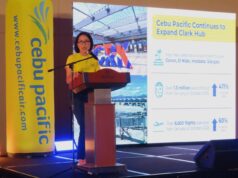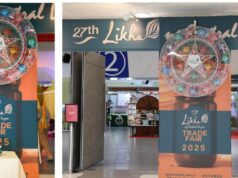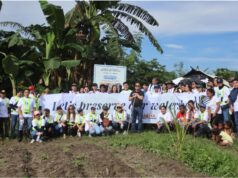GAPAN CITY – A source of livelihood for some 15,000 people, footwear-production is a struggling industry that needs a much bigger push, city officials here said.
“There’s no doubt our slippers here are creatively crafted, you can find in both modern and traditional designs,” said Leocadio Reyes, president of the City of Gapan Footwear Multi-purpose Coop. that displays a long line of locally-made slippers in a lot provided for by the city government in front of the city hall since Aug. 9.
Slipper industry has been in this city since time immemorial, Reyes said. But government intervention which “earned us our place” came in 2000.
Mayor Christian Tinio said at least three villages in the city have “tsinelas” as their main source of livelihood. They are San Lorenzo, Marilou and Pambuan.
“Thus, at least P200-million roll in this business here annually,” Tinio said.
“And that is now the bigger challenge to our producers here,” the local chief executive said.
Saying that demand for Gapan City-made footwear continues to grow with orders coming from malls such as SM and Gaisano, the mayor said the market should level up to “repeat orders.”
“The quality of our products has to upgrade and attuned to the times especially with the influx of products from China,” he said.
Brigida Pili, provincial director of the Department of Trade and Industry (DTI), said that slipper production was identified by the agency as this city’s One Town One Product (OTOP). This means that the industry should be the focus of the national government as well as local government agencies and private entities in livelihood programs.
Thus, OTOP identification entails support of technology transfer to provisions of financing facilities, packaging and marketing, Pili said.
Besides DTI and LGU, the Department of Agriculture (DA) and the office of the provincial agriculturist also formed support system for the industry players.
Reyes said that government intervention even forced them to depart from the traditional branding of their products as made in Marikina or other places known in the industry.
“Bago dumating ang suporta ng gobyerno sa pagtsi-tsinelas, may mga umo-order at kung saan gustong sabihin na doon gawa, yun ang ginagawa ng iba,” he said.
But a few years back, he said the city council has passed an ordinance that obliged producers to put Gapan’s trademark to their products.
Reyes said most of the raw materials they use, particularly synthetic leathers, were imported from China. “Kaya medyo malaki rin ang puhunan pero maayos naman,” he said.
Tinio said that besides upgrading quality control mechanism, the city government also monitors the welfare of all the stakeholders, including the youths in the production area. “We do not allow children to be exposed in dangerous areas of production,” the mayor said.
Reyes said their members had to buy more machines to level up production.
“There’s no doubt our slippers here are creatively crafted, you can find in both modern and traditional designs,” said Leocadio Reyes, president of the City of Gapan Footwear Multi-purpose Coop. that displays a long line of locally-made slippers in a lot provided for by the city government in front of the city hall since Aug. 9.
Slipper industry has been in this city since time immemorial, Reyes said. But government intervention which “earned us our place” came in 2000.
Mayor Christian Tinio said at least three villages in the city have “tsinelas” as their main source of livelihood. They are San Lorenzo, Marilou and Pambuan.
“Thus, at least P200-million roll in this business here annually,” Tinio said.
“And that is now the bigger challenge to our producers here,” the local chief executive said.
Saying that demand for Gapan City-made footwear continues to grow with orders coming from malls such as SM and Gaisano, the mayor said the market should level up to “repeat orders.”
“The quality of our products has to upgrade and attuned to the times especially with the influx of products from China,” he said.
Brigida Pili, provincial director of the Department of Trade and Industry (DTI), said that slipper production was identified by the agency as this city’s One Town One Product (OTOP). This means that the industry should be the focus of the national government as well as local government agencies and private entities in livelihood programs.
Thus, OTOP identification entails support of technology transfer to provisions of financing facilities, packaging and marketing, Pili said.
Besides DTI and LGU, the Department of Agriculture (DA) and the office of the provincial agriculturist also formed support system for the industry players.
Reyes said that government intervention even forced them to depart from the traditional branding of their products as made in Marikina or other places known in the industry.
“Bago dumating ang suporta ng gobyerno sa pagtsi-tsinelas, may mga umo-order at kung saan gustong sabihin na doon gawa, yun ang ginagawa ng iba,” he said.
But a few years back, he said the city council has passed an ordinance that obliged producers to put Gapan’s trademark to their products.
Reyes said most of the raw materials they use, particularly synthetic leathers, were imported from China. “Kaya medyo malaki rin ang puhunan pero maayos naman,” he said.
Tinio said that besides upgrading quality control mechanism, the city government also monitors the welfare of all the stakeholders, including the youths in the production area. “We do not allow children to be exposed in dangerous areas of production,” the mayor said.
Reyes said their members had to buy more machines to level up production.




